Snapdragon 865 revealed: 6 ways it will transform flagship phones
Expect more powerful cameras, faster AI in 2020's top phones
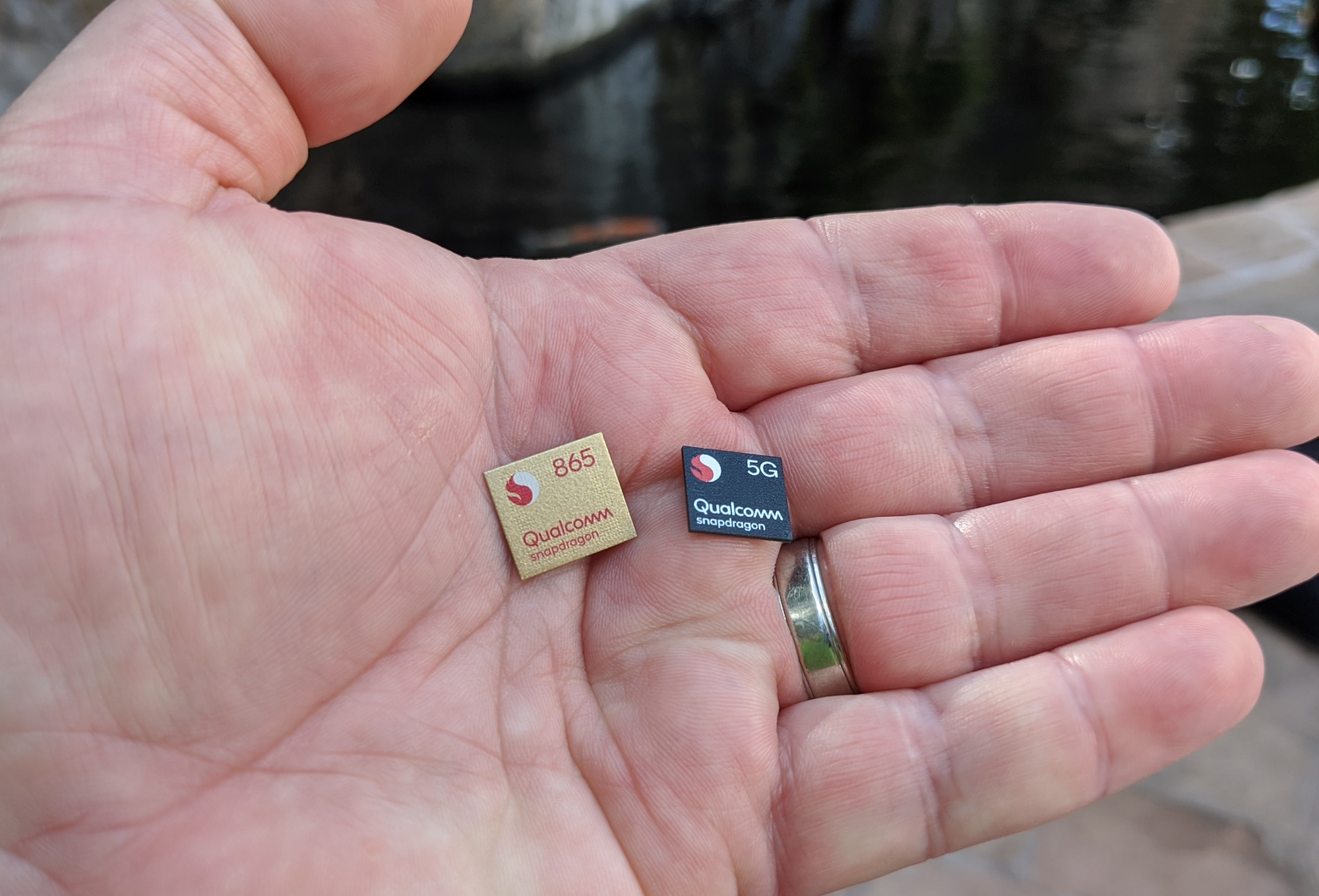
Mobile processor unveilings tend to focus on speed bumps and little else. And while the Snapdragon 865 unveiled at Qualcomm's annual tech summit in December will certainly improve upon the performance of its predecessor, the new chipset's real benefits will impact the best phones way beyond just sheer speed.
For starters, there's 5G connectivity, as the Snapdragon 865 works with an X55 5G modem to support the faster speeds of 5G networks as they're built out by network operators. But Qualcomm is also promising improvements for mobile photography, artificial intelligence and gaming that will be powered by the Snapdragon 855.
We're about to see these improvements out in the wild, as the first Android phones featuring the Snapdragon 865 are about to arrive. That would be the Galaxy S20, the Galaxy S20 Plus and the Galaxy S20 Ultra, unveiled by Samsung in February and arriving in stores on March 6. All three phones feature the Snapdragon 865 and 5G compatibility.
The S20 will be the first phones in the U.S. to have the Snapdragon 865 chip, but more devices are on the way. Xiaomi, Oppo and Motorola have committed to using the chip as well.
Here's what you can expect from a Snapdragon 865-powered phone.
Snapdragon 865 camera boost: Up to 200 megapixels and 8K video
It's understandable why Qualcomm wants to emphasize what the Snapdragon 865 brings to mobile photography. After all, snapping photos has become one of the main things we do with our phones. “Consumers buy camera phones,” Alex Katouzian, senior vice president and general manager, mobile at Qualcomm, said during December’s Qualcomm tech summit. “They don't just buy a phone.”
With Qualcomm's new processor, the best camera phones running Android are about to get more sophisticated. For instance, when you're capturing 4K video and take a still shot by pressing the shutter button, you get a 64-megapixel shot instead of a lower resolution photo as you would now.

The Spectra 480 image signal processor on the Snapdragon 865 is capable of 2 gigapixel-per-second speeds, meaning it can process images faster while consuming less power. That opens up new features you wouldn't have thought possible for a smartphone-sized camera a few years back.
Qualcomm says phones with the Spectra 480 ISP will be able to capture 4K HDR shots with more than a billion shades of color. And there's enough processing power to shoot limitless amounts of slow-motion HD video at 960 frames per second. That means you can train your camera on someone and just leave slow-motion running instead of timing your video capture to the exact moment you want to slow down.
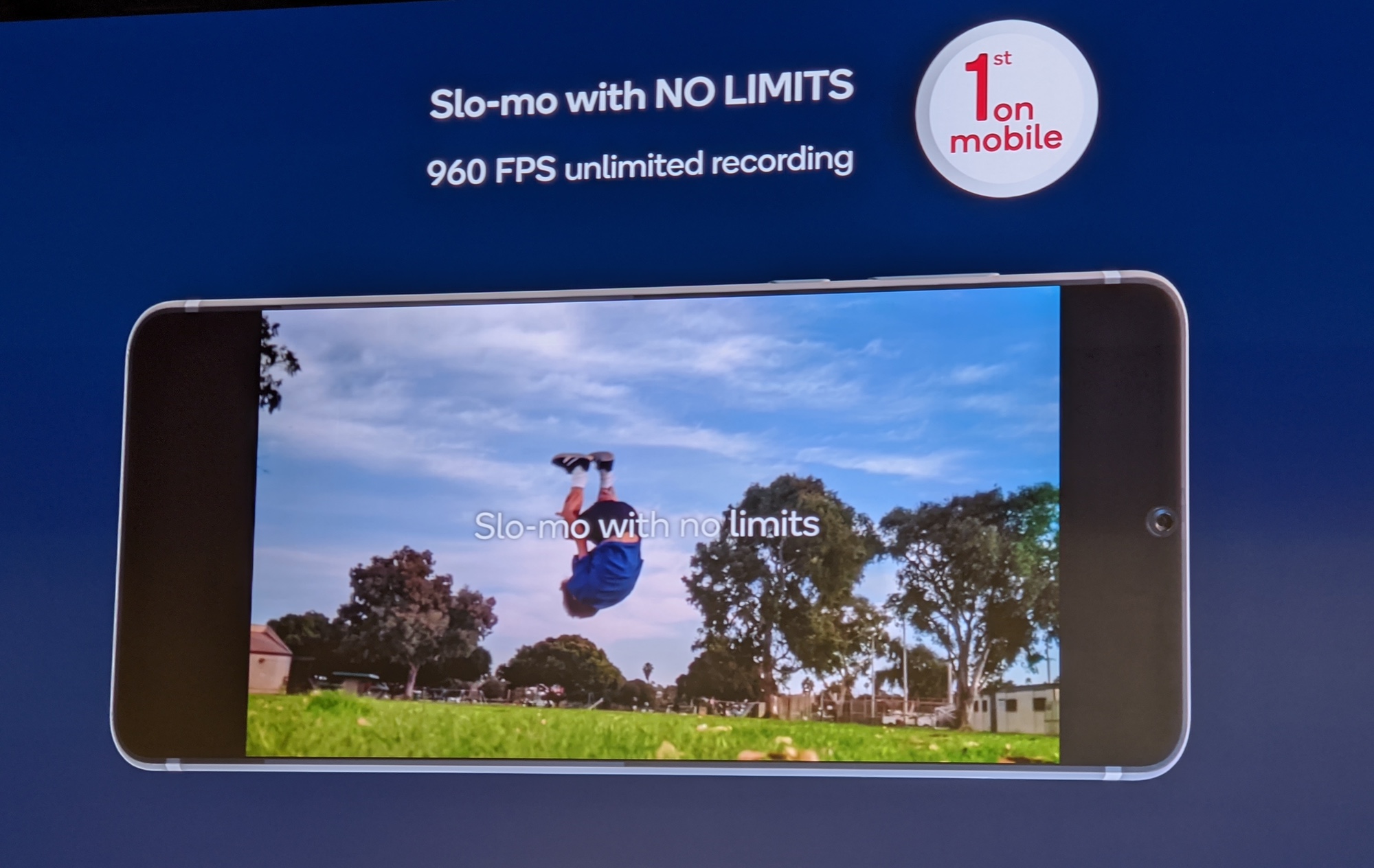
According to Qualcomm, the Snapdragon 865's image processor can also support 8K video at 30 frames per second, and while the results looked pretty impressive on an 8K monitor in Qualcomm's demo room, I'm not sure the effect will translate when you're watching things on a smartphone-sized screen. (Qualcomm has since shared some 8K video footage shot with an 865-powered device that gives us a taste of what to expect from phones in the real world. For what it's worth, the S20 family can capture 8K video at 24 fps.)
More impressive is the ability to support 200-megapixel cameras. That last feature isn't vaporware, Judd Heape, Qualcomm's senior director of product management for camera, told the audience at Qualcomm's tech summit here: Qualcomm has teamed up with sensor makers to develop these larger image sensors and those will be available next year. That news sounds particularly relevant in light of the Galaxy S20 Ultra's 108-megapixel main camera.
Working with the AI engine on the Snapdragon 865 — more on that feature in a moment — the processor's ISP will be able to identify backgrounds, people and objects, treating each thing individually for a customized photo. A demo by a company called Morpho showed off how AI segmentation in which different parts of a photo are identified (your face, hair, backgrounds and more. By separating out those segments, they can be enhanced individually rather than a picture wide enhancement that can cost you finer details
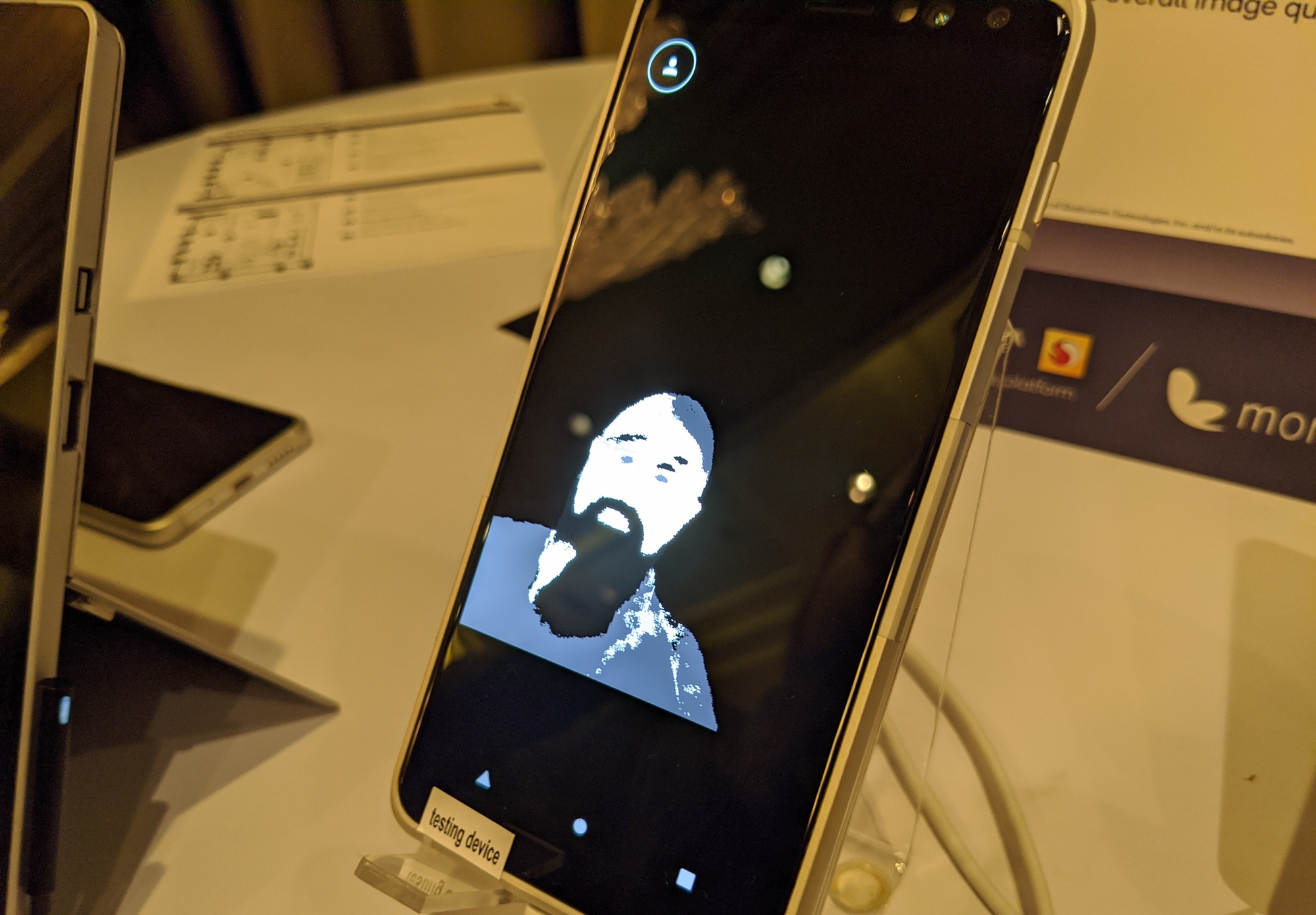
Qualcomm says the new processor also supports Dolby Vision video capture for professional-quality HDR footage that captures and preserves brightness, contrast and color in your videos; playback will work on all types of devices, even those that aren't equipped with Dolby Vision.
It was impressing watching footage captured with Dolby Vision compared to those same shots captured by an ordinary camera. In poorly lit settings, backlighting washed out some of the details in the video, but those still stood out in the Dolby Vision-captured footage.
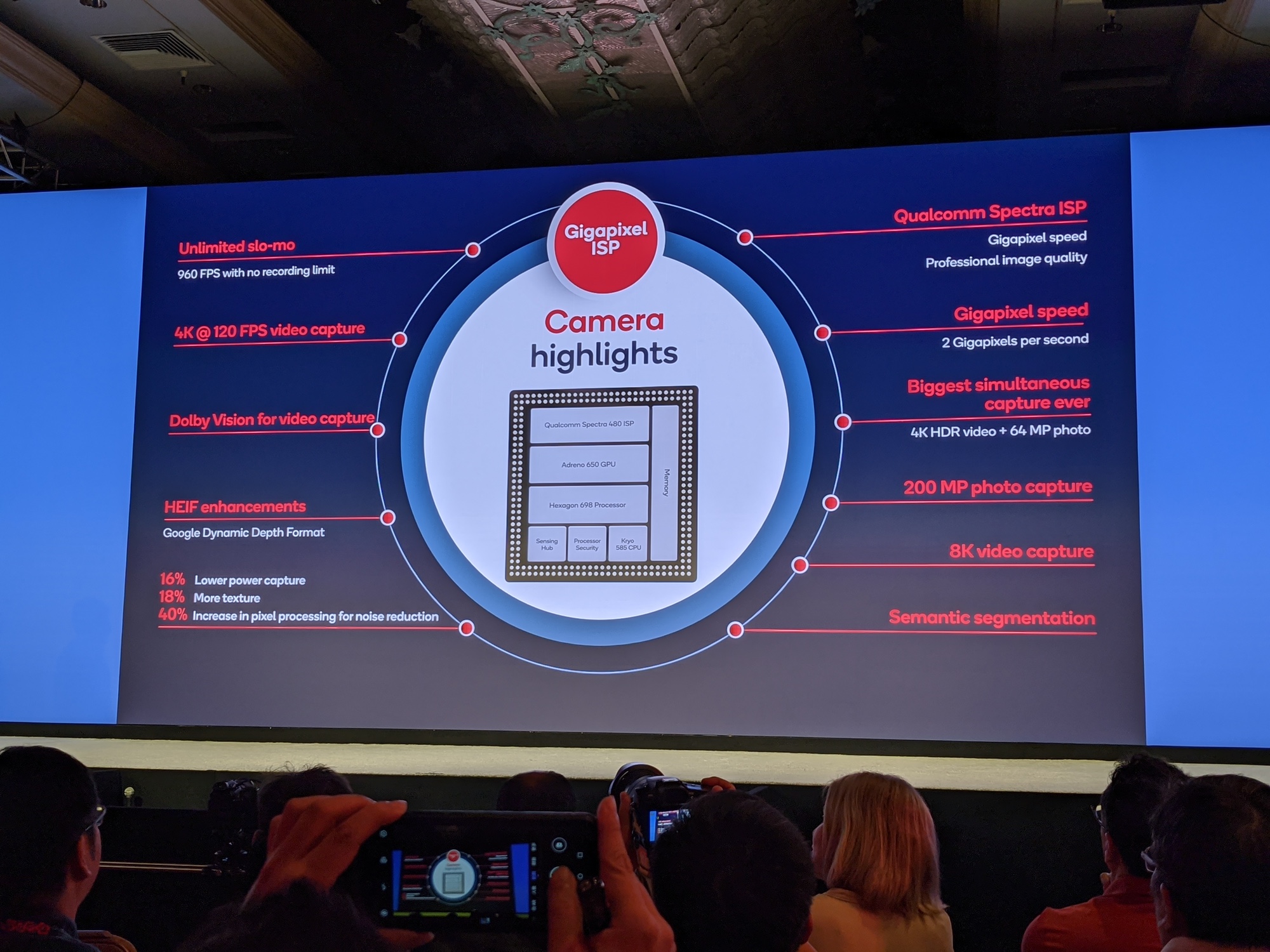
The proof will lie in the photos Snapdragon 865-equipped phones ultimately produce, but we're excited about seeing all these features in action as phone makers continue to push the envelope of what smartphone cameras can do.
Snapdragon 865 5G: It’s included (and more future-proof)
By including a 5G modem with last year's Snapdragon 855, Qualcomm established itself as one of the leaders in pushing the new networking standard. That's continuing with the Snapdragon 865, which features an Snapdragon X55 5G Modem-RF system. Qualcomm didn’t integrate the modem into the chipset, like it did with the lower-tier Snapdragon 765 introduced in December, but it hopes that its modem-to-RF antenna approach — the company designs system RF, RF front end and modem as one system — provides consistent performance and fast speeds.
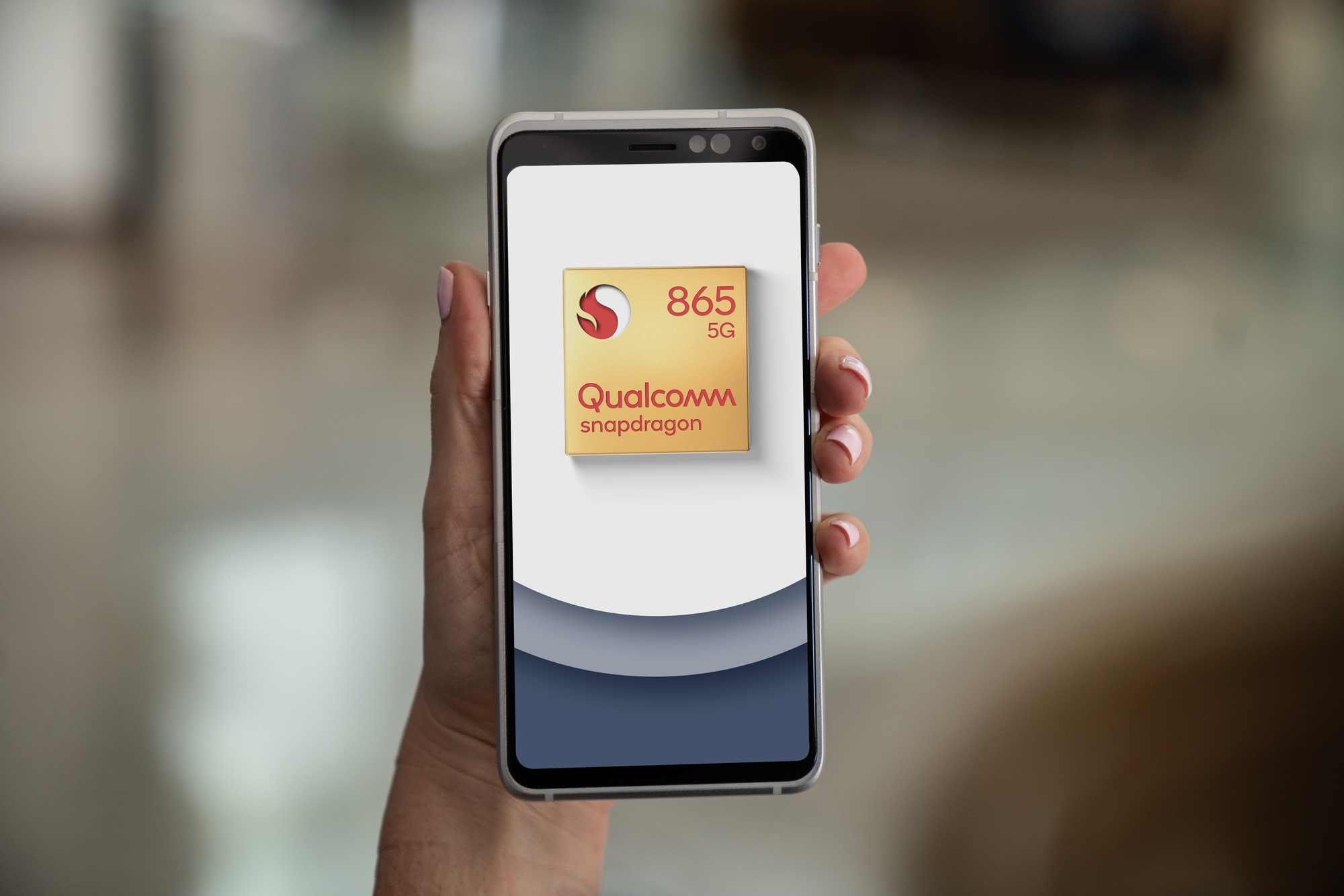
In fact, Qualcomm says the modem can reach peak speeds of up to 7.5 Gbps, which far outpaces the 1 Gbps-plus speeds that 5G networks based on millimeter-wave can reach, and it's not a maximum networks built on lower-band spectrum are going to approach anytime soon. But Qualcomm is hoping to emphasize that its modem can handle whatever speeds 5G networks deliver. And it's also capable of hopping onto other networks like LTE and 3G when those signals are the only ones available, unlike last year's X50 modem, which required phones to include a separate LTE modem to handle other types of networks.
The X55 modem included with the Snapdragon 865 supports multiple technologies used to build out 5G networks, so the hope is that it will lead to more phones capable of working the next-generation network. And with technologies like Qualcomm's Smart Transmit, Signal Boost and Wideband Envelope Tracking, the carrier looks to maintain fast data speeds while avoiding some of the overheating and battery draining problems that initial 5G-capable phones encountered.
The Galaxy S20 is an example of that wider 5G support. All three S20 models have 5G compatibility and will work on all the 5G networks launched by the major U.S. carriers.
Snapdragon 865 performance: Yes, phones are getting faster
OK, we should talk about performance a little bit, because it's getting a boost with the Snapdragon 865. The Kryo 585 CPU used by the Snapdragon 865 promises up to a 25% performance improvement over what we saw from the Snapdragon 855 this year; power efficiency will also improve by 25% with the Kryo CPU in the Snapdragon 865.
The Kryo 585 features four CPUs in its performance core based on Arm's Cortex-A77; the prime CPU is a 2.84Ghz chips, and it's assisted by a trio of 2.4GHz performance cores. The efficiency core features four cores based on the Arm Cortex A-55.
Likewise, the Adreno 650 GPU should also deliver up to a 25% boost in graphics rendering from the previous generation. That should mean faster Android flagships than ever before.
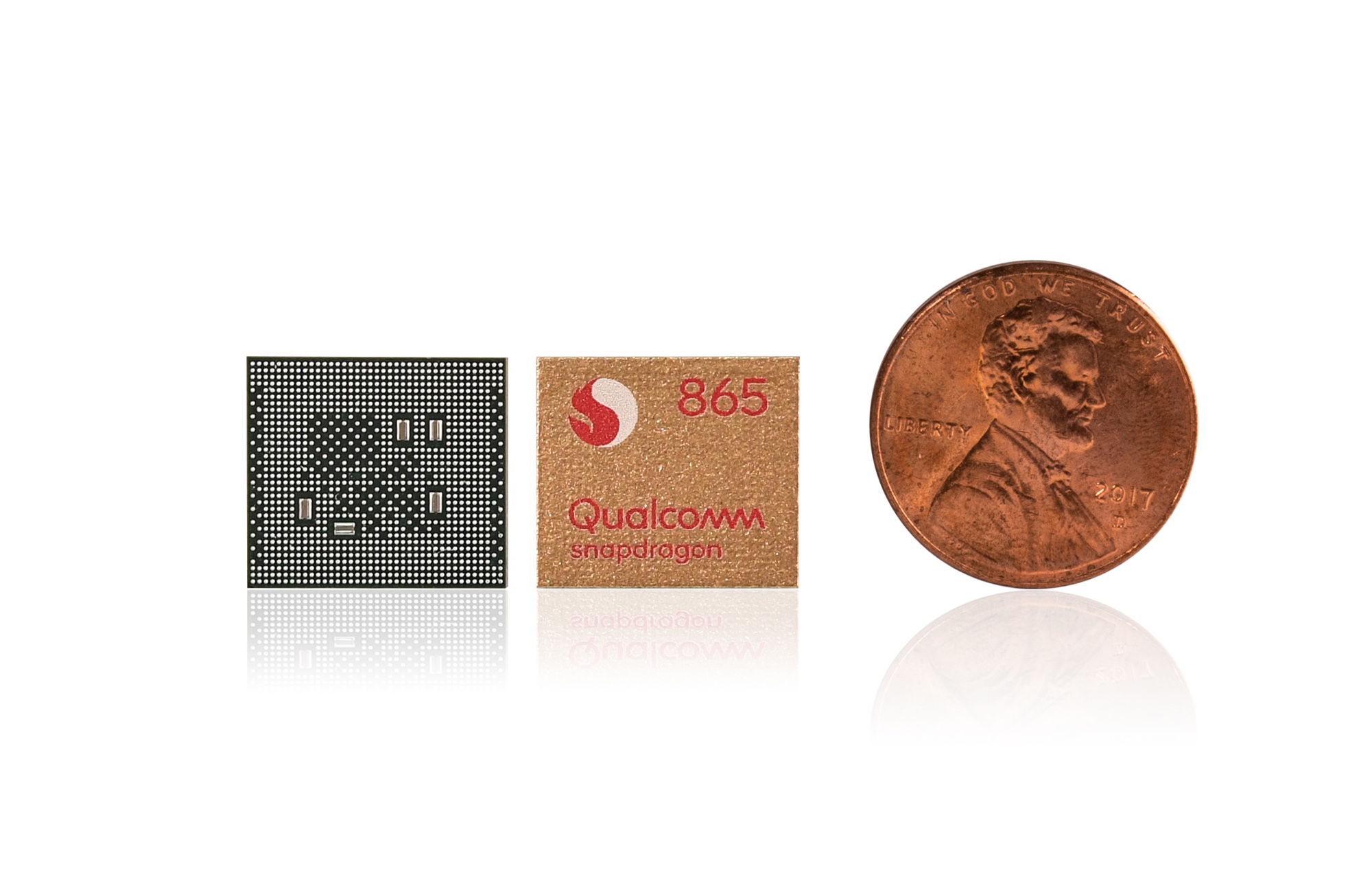
But will they be fast enough to catch the iPhone? The Snapdragon 855-powered OnePlus 7 Pro posted a Geekbench 5 multicore score of 2,802 when we tested that phone last year. That's an impressive result, but it was still behind the 3,509 score that the A13 Bionic-powered iPhone 11 Pro tallied. A 25% improvement delivered by the Snapdragon 865 would just about close that gap, but keep in mind that the OnePlus 7 Pro came packed with 12GB of RAM, which helped goose its result. What's more, Apple is doubtlessly working on the A14 processor for next year's iPhone 12, which will move the performance bar even further.
Our initial benchmarking of a Snapdragon 865-powered device — a reference device that Qualcomm provided us and not a shipping phone — produced some promising results. On Geekbench 5, the Snapdragon 865 device got close to the A13 Bionic's pace-setting result on this general performance test. You can read our full report on Snapdragon 865 benchmarks to get an ideal of how this year's Android phones will perform.

Qualcomm's processor improvements aren't just about speed. Each generation of the Snapdragon also looks to consume less power when boosting performance, and to that end the Kryo 585 inside the Snapdragon 865 can deliver a 25% improvement in power efficiency.
The bottom line is that phones running on a Snapdragon 865 are going to outperform this year's top handsets. But that's not the story Qualcomm is emphasizing with its new processor.
Snapdragon 865 AI: Voice translation and a lot more
Qualcomm is really ramping up the processing power for the Snapdragon's 835 on-board artificial intelligence. The new chipset features Qualcomm's 5th-generation AI Engine, which is capable of delivering 15 trillion operations per second (TOPS), twice what the AI engine on the Snapdragon 855 could do. The chipset's Hexagon 698's Tensor Accelerator is more powerful, too, delivering a 4x performance improvement over its predecessor while consuming 35% less power.
That should put AI to work in more areas. One potential feature touted by Qualcomm is the ability to translate your speech into another language using both text and speech. During a December session detailing the AI changes to the Snapdragon 865, Ziad Asghar, vice of product management of AI and strategy for Qualcomm, demonstrated live transcription in which he spoke in English which was translated to text in real-time while also being translated into Mandarin. That happened on the device itself, with no information being translated to the cloud. The demo proved to be just as impressive when I saw my own speech being transcribed on screen in real time on a Snapdragon 865 reference device only to be immediately translated into Chinese characters.
Voice detection should also be more accurate thanks to AI improvements, making it easier to speak with a phone's onboard assistant without having to shout or repeat yourself. In another demo showing off the AI Engine's contextual awareness, the Snapdragon 865 was able to identify different types of ambient noise — a busy airport, a city street and so on — and then use that info to adjust the assistant's ability to hear your commands.
You'll see improvements in apps running on Snapdragon 865-powered devices, too — Snap appeared at Qualcomm's tech summit to show off Snapchat producing image effects at four times its current speed.
Snapdragon 865 gaming: Desktop quality, really?
Qualcomm is touting "desktop-quality gaming" on mobile devices with the Snapdragon 865. Whether the new chipset can deliver that remains to be seen, though some in-person demos on smartphone-sized screen depicted some impressive graphics. And Qualcomm is certainly promising some big improvements for mobile gaming.
The new processor is capable of supporting displays with a 144-Hz refresh rate. Right now, top gaming-focused phones offer a 120-Hz refresh rate for smoother scrolling and minimal lag, so that's quite a leap forward. (The S20 phones feature the ability to turn on a 120-Hz refresh rate on their displays, though not at full resolution.) Qualcomm's also working with game makers to boost the performance of their apps on Snapdragon-based devices; the company specifically spoke about working with the makers of that first-person multiplayer shooter to enable 90-Hz refresh rates for the game — a trend Qualcomm sees continuing in 2020 with other games.
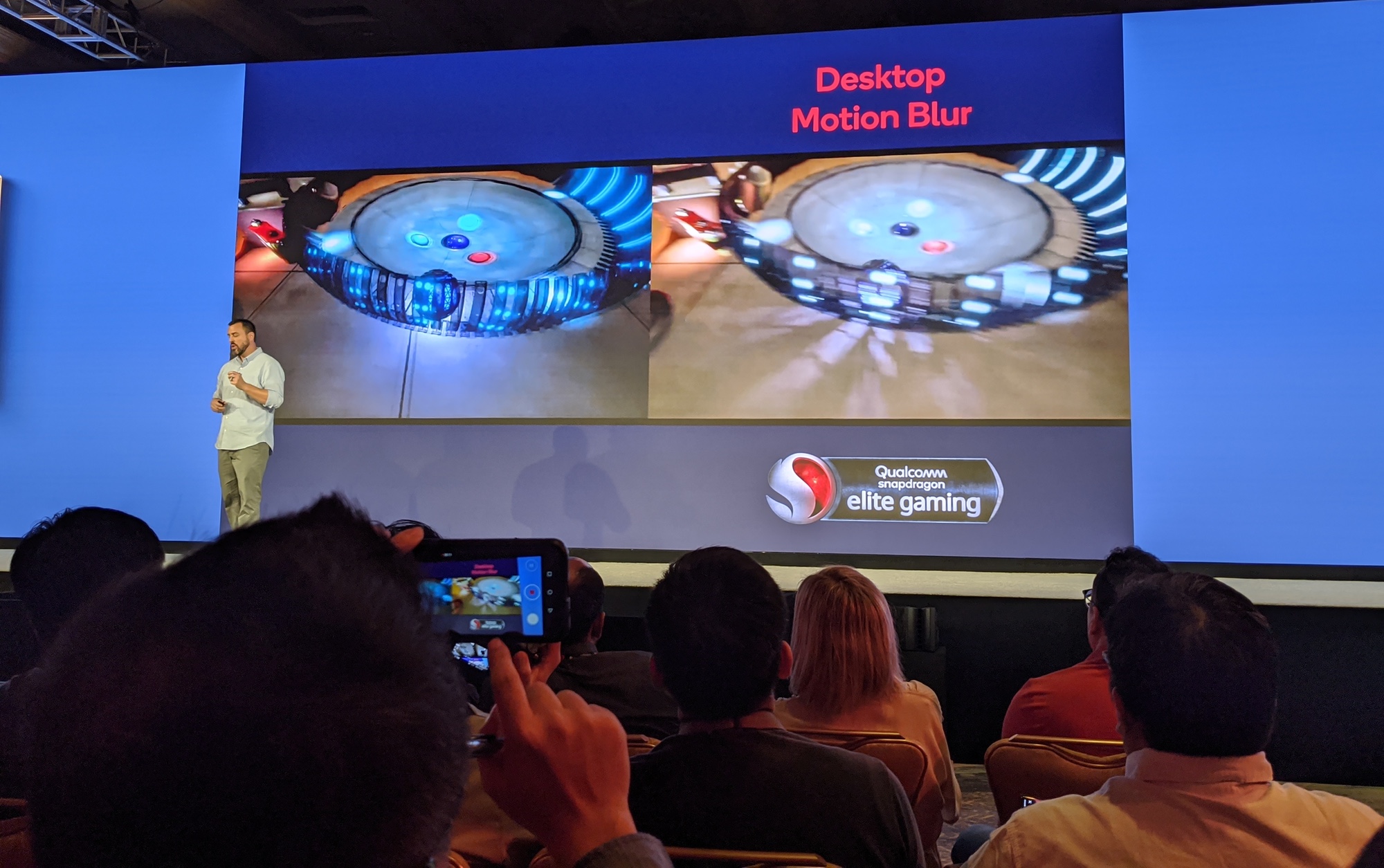
Other gaming improvements are additions to Snapdragon Elite Gaming, an array of hardware and software optimizations and features introduced by Qualcomm that focus on gaming. A Game Color Plus feature with the Snapdragon 865 is expected to enhance details, ramp up color saturation and offer local tone mapping for better graphics on all games, with no additional development work required. Besides the faster graphics rendering from the Adreno 650 GPU, a hardware feature called Adreno HDR Fast Blend can bolster games with heavy blending of layers, deliver up to twice the performance lift for some operations. (Think games with a lot of smoke and fire, which will now enjoy higher frame rates during graphically intense scenes.)
Qualcomm says Snapdragon 865 will support Desktop Forward Rendering, making it the first mobile platform on Android to do so. That lets game makers use desktop-quality lighting and post-processing effects in their mobile offerings. An on-stage demo showed off a pinball game, where the version enhanced by Desktop Forward Rendering depicted the ball's shadow, the glare of flashing lights and even the reflections of the ball on mirrors within the pinball machine.
With Snapdragon 865, you'll also be able to use a new feature called Adreno Updateable GPU Drivers to download GPU driver updates directly from an app store for better control over how you mobile game performs. That's a gaming feature desktop gamers enjoy for customizing their experience, and it will be as simple for mobile users as heading to Google Play to download drivers.
Snapdragon 865 Wi-Fi 6: Fast connectivity all around
It's no surprise that the Snapdragon 865 chipset supports the emerging Wi-Fi 6 wireless standard, which promises better performance particularly in areas where a lot of devices are clamoring for Wi-Fi connectivity. Qualcomm says features on its processing platform will make Snapdragon 865-powered devices capable of Wi-Fi speeds approach 1.8 Gbps, even with other devices on a wireless network.
The Snapdragon 855 introduced 8x8 multiuser MIMO on downloads, meaning eight devices could simultaneously download data from an access point with no performance hit. With the Snapdragon 865, that features comes to uplink, so multiple devices will be able to upload data as well — handy if you're in a crowded environment and need to upload a video.
More to come
Those are just some of the initial features we've heard about the Snapdragon 865, which also includes a Qualcomm aptX Voice feature for improved audio. Support for aptX Adaptive and Qualcomm TrueWireless Stereo Plus should mean less latency and better battery life for wireless headphones connecting to Snapdragon 865-powered devices — good news since phone makers seems committed to wiping out the headphone jack from their handsets.
Sign up to get the BEST of Tom's Guide direct to your inbox.
Get instant access to breaking news, the hottest reviews, great deals and helpful tips.
Philip Michaels is a Managing Editor at Tom's Guide. He's been covering personal technology since 1999 and was in the building when Steve Jobs showed off the iPhone for the first time. He's been evaluating smartphones since that first iPhone debuted in 2007, and he's been following phone carriers and smartphone plans since 2015. He has strong opinions about Apple, the Oakland Athletics, old movies and proper butchery techniques. Follow him at @PhilipMichaels.

